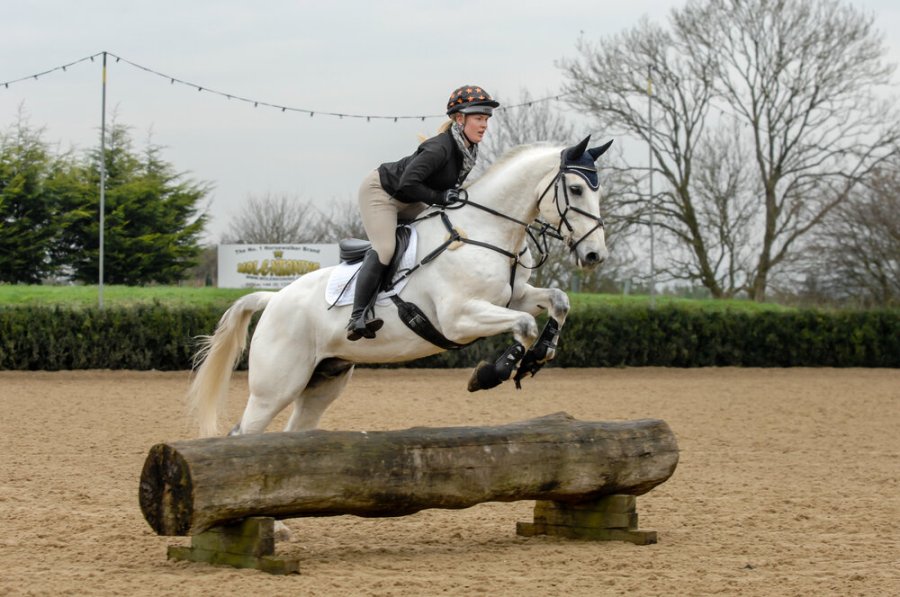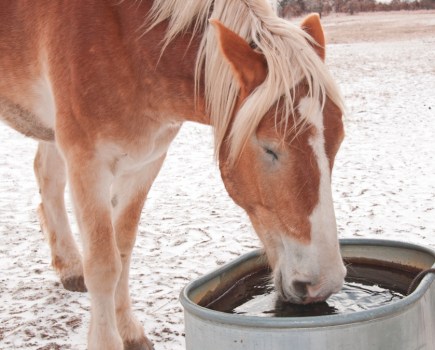Feeding a competition horse will mean adjusting their diet accordingly, in order to provide the correct amount of energy they require to fuel the amount of work you are doing with them. Requirements for individual horses will vary according to factors such as bodyweight, body condition score, environmental factors (how much turnout they get, grass quality, hay quality, for example), the horse’s age, discipline you compete in and rider ability. The general feeding rule remains key though: fibre — that is hay, haylage and grass — should always form the basis of a competition horse’s diet.
“A lack of fibre will increase the incidence of gastric ulcers, wood chewing, loose droppings and weight loss,” explains Stephanie George, nutritionist at Saracen Horse Feeds. “Additionally, fibre in the hindgut traps water and electrolytes and helps to combat dehydration. Performance horses should receive a minimum of 1.5-2% of their bodyweight in fibre — more if you’re feeding haylage because its water content is higher.”
An increasing number of performance feed ranges available to buy that are designed to meet the nutritional requirements of horses performing in specific disciplines.
“Performance feeds are formulated to provide your horse with optimum nutrition when fed at the recommended quantity, though, so make sure that you weigh your feed to ensure the correct intake,” states Stephanie. “If you need to feed below the manufacturer’s recommended levels — to help manage your horse’s body condition, for example — use a feed balancer to ensure their nutrient intake is consistent.”
How to feed an excited horse on competition day
Travelling and competing can mean that horses go for prolonged periods without eating. “This leads to a build-up of gastric acid in the stomach and increases the chance of gastric ulcers, which will reduce performance,” says Stephanie. “Allow your horse to regularly graze or pick at a bayonet to stimulate saliva production. Alfafa is a natural antacid, so frequent bites of alfalfa chaff will encourage chewing and help to neutralise excess stomach acid, especially if fed 30 minutes before riding.”
Even with a haynet in front of them, some horses become too excited to eat when they realise it’s competition day while others prefer not to eat while in a moving horsebox. This was the case for grassroots event rider Natalie Clark’s ex-racehorse, Classic Action.
“As soon as Classic got any sense that he might be going out in the horsebox, he would stop eating. He’d get so excited that he would start fidgeting, pawing the ground, whizzing around in his stable, because he wanted to get going,” says Natalie. “He did have grade three gastric ulcers when we first bought him out of a racing yard and we managed him carefully, so we knew that doing anything on an empty stomach was a particularly bad idea for him.”
Natalie gave Classic his morning hard feed and forage an hour before anyone arrived on the yard so that he had a chance to eat something before the day began.
“Sometimes this meant a 4am visit to the yard, but it worked so it became his normal routine,” adds Natalie. “He was never washed or plaited the night before a competition, because he was clever and knew what that meant. His travel boots went on as he was led to the horsebox and lorry couldn’t be moved on the yard until we were ready to go. The sound of the engine starting also got him excited.”
Classic was given a haynet in the horsebox, but he rarely ate it. He would devour it on the way home, however.
“A vet suggested giving him small portions of chaff in a bucket during the day, so that’s what I started to do,” adds Natalie. “I always packed a big bucket of chaff in the lorry and Classic would be given him a couple of handfuls regularly. He’d also be allowed to graze at regular intervals. Classic enjoyed eating chaff and so this was a good way to make sure his stomach wasn’t empty. It always seemed to work well because his gastric ulcers didn’t bother him and he competed successful at Pony Club and grassroots level for more than 10 years.”
Feeding for good coat shine
Coat condition is an important factor when feeding a competition horse — not least because a shiny coat makes them look good and is a sign of good health. Regular grooming helps to get that perfect coat shine, but correct feeding is also a major factor.
.“Feed plays a huge part in getting a horse’s coat shiny,” says show horse producer Nicky Smith. “If they are well in themselves, they’ll look great in their coats. We feed good rye grass haulage, which we make ourselves, and feed accordingly, being aware of laminitis. It’s important to feed according to your horse’s workload and weight. If you are unsure, speak to an equine nutritionist who will be able to help you work out a suitable feeding plan.”
Nicky’s feed room contains:
- Sunflower oil for a shiny coat and soya oil to add condition.
- Boiled barley for condition and linseed for a good coat shine.
- Sugar beet for fibre.
- Garlic
- Seaweed as an all-round supplement and to bring out the colour of the horse’s coat.
- Feed balancer
- Conditioning cubes
- Alfafa chaff if the ponies need a bit more condition.
- A supplement to support good gut health, especially at the start and end of the showing season when the ponies routines change.
Avoid having too much condition
Nicky is a stickler for ensuring that her ponies are riding fit and not fat, as this plays a part in general health and therefore coat condition. As well as managing feeds, exercise is important to keep your horse fit enough for the work you are expecting them to do.
“Horses should be fit and well, not fat,” she advises. “We spend a lot of time exercising the ponies and getting them toned up — looking well, but fit and not fat. They trot up the gallops, go in the school, hack and go on long-reins, so they get a good variety of work. Being fit helps to develop muscle and toppling in all the right places.”
Love hacking? Join our free #Hack1000Miles challenge and see how far you can go!
Subscribe to Your Horse Magazine – the perfect Christmas gift!









